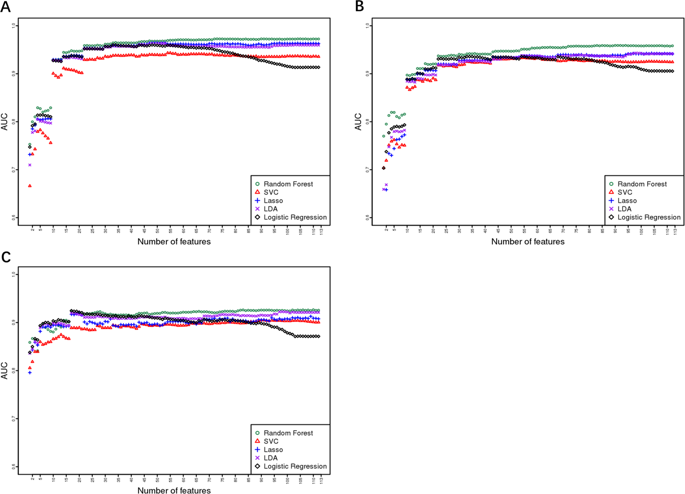当前位置:
X-MOL 学术
›
Transl. Psychiaty
›
论文详情
Our official English website, www.x-mol.net, welcomes your
feedback! (Note: you will need to create a separate account there.)
Implementing machine learning in bipolar diagnosis in China.
Translational Psychiatry ( IF 5.8 ) Pub Date : 2019-11-18 , DOI: 10.1038/s41398-019-0638-8 Yantao Ma 1, 2, 3, 4 , Jun Ji 5, 6, 7, 8 , Yun Huang 1, 2, 3, 4 , Huimin Gao 1, 2, 3, 4 , Zhiying Li 1, 2, 3, 4 , Wentian Dong 1, 2, 3, 4 , Shuzhe Zhou 1, 2, 3, 4 , Yue Zhu 1, 2, 3, 4 , Weimin Dang 1, 2, 3, 4 , Tianhang Zhou 1, 2, 3, 4 , Haiqing Yu 6, 9 , Bin Yu 6 , Yuefeng Long 6 , Long Liu 6 , Gary Sachs 10 , Xin Yu 1, 2, 3, 4
Translational Psychiatry ( IF 5.8 ) Pub Date : 2019-11-18 , DOI: 10.1038/s41398-019-0638-8 Yantao Ma 1, 2, 3, 4 , Jun Ji 5, 6, 7, 8 , Yun Huang 1, 2, 3, 4 , Huimin Gao 1, 2, 3, 4 , Zhiying Li 1, 2, 3, 4 , Wentian Dong 1, 2, 3, 4 , Shuzhe Zhou 1, 2, 3, 4 , Yue Zhu 1, 2, 3, 4 , Weimin Dang 1, 2, 3, 4 , Tianhang Zhou 1, 2, 3, 4 , Haiqing Yu 6, 9 , Bin Yu 6 , Yuefeng Long 6 , Long Liu 6 , Gary Sachs 10 , Xin Yu 1, 2, 3, 4
Affiliation

|
Bipolar disorder (BPD) is often confused with major depression, and current diagnostic questionnaires are subjective and time intensive. The aim of this study was to develop a new Bipolar Diagnosis Checklist in Chinese (BDCC) by using machine learning to shorten the Affective Disorder Evaluation scale (ADE) based on an analysis of registered Chinese multisite cohort data. In order to evaluate the importance of each item of the ADE, a case-control study of 360 bipolar disorder (BPD) patients, 255 major depressive disorder (MDD) patients and 228 healthy (no psychiatric diagnosis) controls (HCs) was conducted, spanning 9 Chinese health facilities participating in the Comprehensive Assessment and Follow-up Descriptive Study on Bipolar Disorder (CAFÉ-BD). The BDCC was formed by selected items from the ADE according to their importance as calculated by a random forest machine learning algorithm. Five classical machine learning algorithms, namely, a random forest algorithm, support vector regression (SVR), the least absolute shrinkage and selection operator (LASSO), linear discriminant analysis (LDA) and logistic regression, were used to retrospectively analyze the aforementioned cohort data to shorten the ADE. Regarding the area under the receiver operating characteristic (ROC) curve (AUC), the BDCC had high AUCs of 0.948, 0.921, and 0.923 for the diagnosis of MDD, BPD, and HC, respectively, despite containing only 15% (17/113) of the items from the ADE. Traditional scales can be shortened using machine learning analysis. By shortening the ADE using a random forest algorithm, we generated the BDCC, which can be more easily applied in clinical practice to effectively enhance both BPD and MDD diagnosis.
更新日期:2019-11-18











































 京公网安备 11010802027423号
京公网安备 11010802027423号